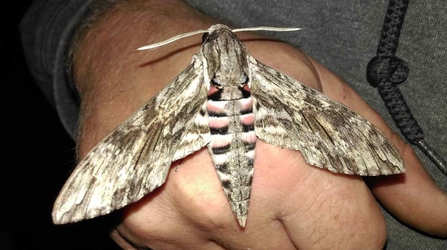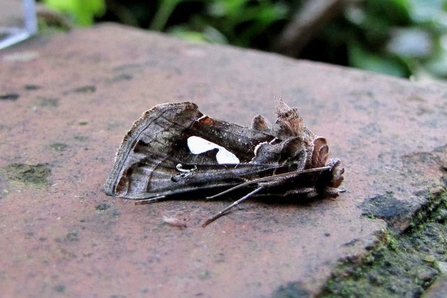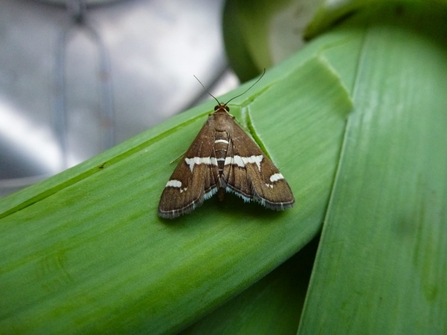What got you interested in moths in the first place and when did you first start moth recording?
I first got interested in moths about 20 years ago, when I was in my mid-teens. I found a large yellow underwing (a reasonably common moth as it turns out) in my bedroom but had no idea what it was so I walked all the way from my house to Newcastle Library and found a book on moths. Happy in my identification, I went back home and let the moth fly out, only to be swiftly traumatised when a song thrush popped out of the hedge and caught it in mid-air. A valuable lesson was learned early on!
I got into moth-trapping when I was working as a seasonal warden at Murlough NNR. I was asked one night, as I lived nearby, would I let the moth man into the nature reserve. His name was Kenny Murphy and from the moment he turned the trap on and the moths started to come I was hooked. I was amazed at how he could even identify some of the moth species as they were flying around our heads before they flew into the trap! I still chat to Kenny regularly, he's a good friend, for advice on moths or just for a good old chat.
What's your most memorable moth encounter?
My most memorable encounter with a moth was when my dad was tending to his bees - I was still a teenager. He came into the house talking about an enormous moth he had found. I asked him where and walked out with a jar 'You're going to need a bigger jar!', he said.
So, properly armed with a large jam jar, I went to hunt for the moth where he said - there it was and it was truly enormous. I hadn't a clue what it was and I'd never even seen an insect as big as this in real life. As I cautiously approached it, with jar and lid in hand, it hissed at me! and I ran away! That last bit isn't strictly true but it really did scare the life out of me.
The moth in question was a convolvulus hawk-moth, one of the biggest species that occurs in Northern Ireland (it's actually a rare immigrant from southern Europe). It wasn't until years later that I found out that the hissing sound was made by the moth rubbing its legs together as a defence mechanism to scare potential predators off - it worked!





